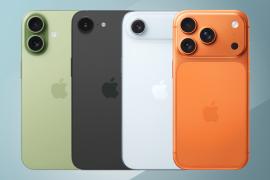Best phones to buy in 2025 reviewed and ranked
The very best smartphones you can buy right now from Apple, Samsung, Google and more
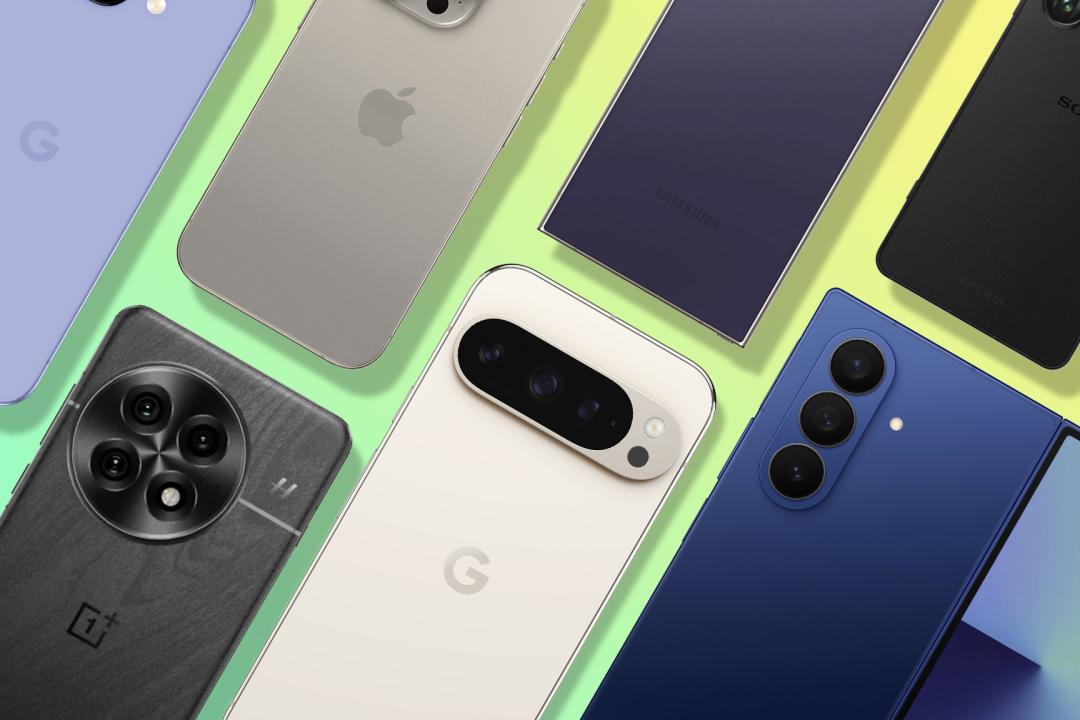
Thinking about upgrading your phone? You’ve come to the right place. With so many models to choose from, it can be tricky to know which one’s worth your money. That’s why we’ve put together this guide, highlighting our top picks based on the things that matter most day to day. Whether you’re drawn to a big-screen Android or Apple’s latest iPhone, these are the handsets we think stand out.
We don’t just look at spec sheets – we test phones in real life. That means streaming shows to see how long the battery lasts, snapping hundreds of photos in different conditions to judge the cameras, and firing up demanding games to push the processors. We also pay close attention to the display, design, durability, and software to see how each device actually feels to use.
Only the strongest performers make the cut. So, whether you want the sharpest screen, the best camera setup, lightning-fast speed, or a phone that can comfortably last all day (and beyond), our rankings will point you in the right direction.
Why you can trust Stuff: Our team of experts rigorously test each product and provide honest, unbiased reviews to help you make informed decisions. For more details, read how we test and rate products.
Quick list: what’s the best phone?
The Apple iPhone 17 (buy now) is the best smartphone you can buy. It’s a pleasing update to a winning formula that’s a much more appealing combo than spending more to go Pro.
The Google Pixel 10 (buy now) delivers nearly all the flagship experience of the Pro model, with a refined design, a bright 6.3in display, strong performance, and versatile cameras, all at a more accessible price.
The Google Pixel 9a (buy now) confirms that Google is a master of affordable phones and is a lesson in vanilla Android excellence. A neat design and top-spec camera smarts make it a wallet-friendly winner.
The Samsung Galaxy S25 Ultra (buy now) is superlative in almost every respect. Design, display, performance… add on the S-Pen stylus and some clever AI additions, and this is a fantastic all-rounder.
The iPhone 17 Pro Max (buy now) comes with the upgraded camera and is the ultimate powerhouse – again. The Pro lineup certainly presents a much better option for experienced users than the iPhone Air.
The Google Pixel 10 Pro XL (buy now) is the ultimate camera phone. It comes with a 50MP main camera, and 48MP wide and telephoto cameras, but it’s not the hardware that makes it special – it’s the software. It’s almost impossible to take a bad photo with the Pixel 10 Pro thanks to Google’s clever AI smarts and editing.
The OnePlus 13 (buy now) has one of the best smartphone displays out there. The 6.8in AMOLED display has a 3168×1440 resolution with dynamic refresh rates ranging from 1 to 120Hz.
The Samsung Galaxy Z Fold 7 (buy now) is an astonishing year-on-year update that’s now top of the class for slimness and an impressive set of cameras. Plenty of power and great global availability are also in its favour.
The Sony Xperia 1 VII (buy now) includes a 3.5mm headphone port, microSD card slot, and a camera with a variable zoom telephoto lens and the best ultrawide in the business. This is the perfect phone for creatives.
The best smartphones you can buy today:
Best phone overall
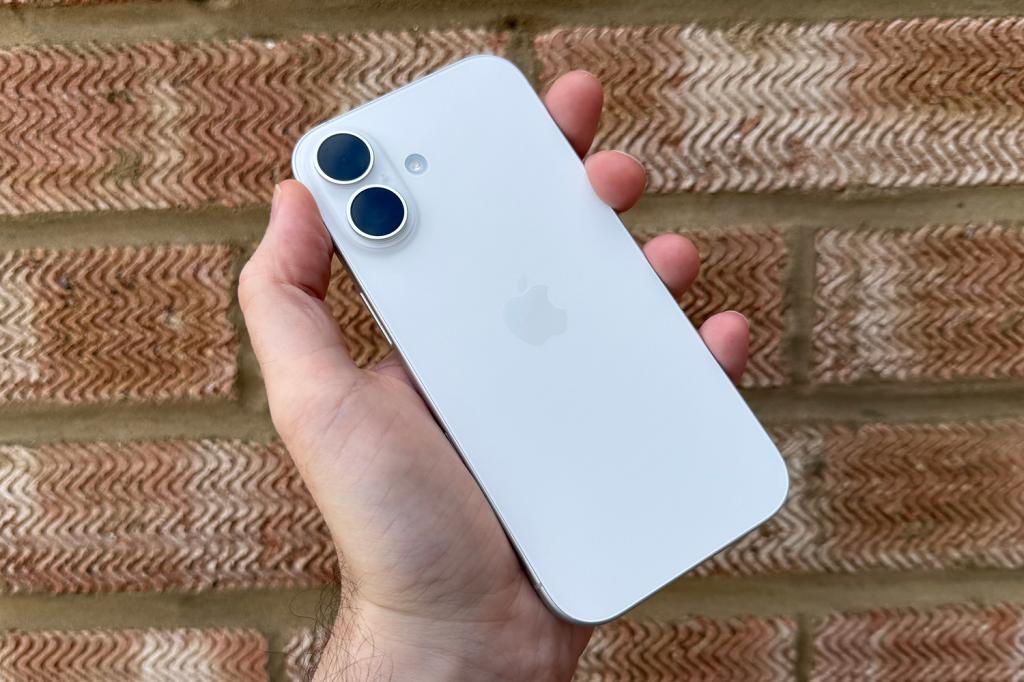
1. Apple iPhone 17
Stuff Verdict
The first standard iPhone in years that almost feels like an act of rebellion. Power. Clout. The least nosebleed-inducing price-tag. Almost no compromises. Boring? Sure. Brilliant? Absolutely.
Pros
- Superb display
- Hugely powerful
- Excellent ecosystem
- Meaningful camera upgrades
Cons
- No telephoto lens
- USB 2.0 data speeds
- iOS 26 design issues
| Apple iPhone 17 specs | |
|---|---|
| Screen | 6.3in 2622×1206 120Hz OLED |
| Processor | Apple A19 |
| RAM | 8GB |
| Storage | 256GB/512GB |
| Software | iOS 26 |
| Cameras | 48MP Dual Fusion rear, 18MP Centre Stage front |
| Battery | 3561mAh |
| Dimensions | 149.9×71.5×7.95 mm / 5.89×2.81×0.31in |
| Weight | 177g / 6.24 oz |
The iPhone 17 is Apple’s best all-rounder yet — and arguably the iPhone most people should buy in 2025. Despite being the entry-level iPhone, it delivers Pro-level performance without the eye-watering price or bulk. While its design hasn’t changed much, the new Ceramic Shield 2 improves scratch resistance, and the build feels as premium as ever.
The biggest win is the display. Apple’s finally upgraded the standard iPhone to a 120Hz OLED panel, matching the Pros for smoothness and adding a 1Hz always-on mode. During testing, scrolling felt far more fluid than on the iPhone 16, and brightness hit 3000 nits – clearly visible even in direct sunlight. The stereo speakers also pack a surprising punch when watching videos or gaming.
The dual 48MP camera system impresses in most conditions. In testing, macro shots showed noticeably better sharpness, and 1x photos looked rich and detailed. The lack of a telephoto lens remains the biggest gap versus the Pro models, digital zoom quickly loses quality beyond 2x, but 4K/60fps video recording and stabilisation keep it competitive.
Performance is stellar thanks to the A19 chip. Games like Assassin’s Creed ran smoothly (with only minor heating), and music production in Korg Gadget performed better than on an M1 iMac. Battery life easily lasts a day of mixed use. The main gripes? USB 2.0 speeds and iOS 26’s flawed “Liquid Glass” interface.
Despite that, Apple’s ecosystem remains unmatched for creative tools and premium apps. Unless you need a telephoto lens or ultra-thin bragging rights, the iPhone 17 nails the essentials. It’s powerful, practical and, for once, a sensible choice.
- Read more: iPhone 17 review
Best Android phone for most people
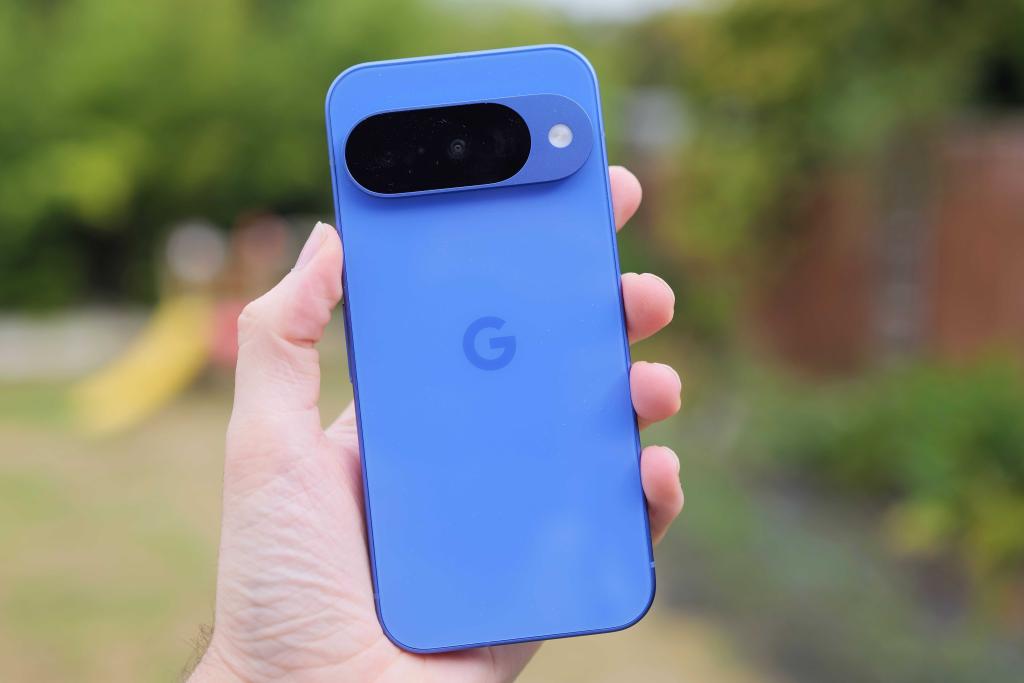
2. Google Pixel 10
Stuff Verdict
The Pixel 10 delivers nearly all the flagship experience of the Pro model, with a refined design, a bright 6.3in display, strong performance, and versatile cameras, all at a more accessible price.
Pros
- Refined, premium design with solid build quality
- Bright, sharp 6.3in Actua OLED display with 120Hz refresh
- Versatile camera system with telephoto, ultrawide, and AI features
Cons
- Base 128GB storage feels tight in 2025
- Wireless charging isn’t as fast as the Pro models
| Google Pixel 10 specs | |
|---|---|
| Screen | 6.3in Actua Display, 3000 Nits, 60-120Hz |
| Processor | Google Tensor G5 |
| RAM | 12GB RAM |
| Storage | 128GB / 256GB |
| Software | Android 15 |
| Cameras | 48MP Main + 12MP Ultrawide + 10.8MP Telephoto (rear) 10.5MP (front) |
| Battery | 4970 mAh |
| Dimensions | 152.8 x 72 x 8.6 mm / 6.02 x 2.83 x 0.34 in |
| Weight | 204 g / 7.20 oz |
Just like the iPhone 17 above, the Google Pixel 10 makes a strong case for skipping the Pro. After an extensive review, it’s clear Google’s flagship-lite hits that sweet spot between power, design, and practicality, making it the Android phone most people should buy.
Let’s start with the build. The satin-finish metal frame and glossy glass back strike the perfect balance of grip and polish. It feels better in hand than the Pro, and the flatter camera bar keeps it steady on a desk (a small but genuinely useful detail). The new Indigo colour of our review unit pops beautifully, and the whole design feels more refined without losing Pixel character.
The 6.3in Actua OLED screen is another highlight. At 3000 nits, it’s blisteringly bright outdoors, with 120Hz smoothness and rich HDR contrast that makes games like Subnautica and binge-watching Wednesday look top-tier. The stereo speakers are punchy too – loud enough to fill a room without that tinny edge you sometimes get on thinner phones.
Performance from the Tensor G5 chip is effortless. Everything runs fast and fluid, from multitasking to AI-powered tools like Magic Cue and Gemini’s smarter on-device help. Yes, benchmark hunters will find Snapdragon 8 Gen 4 phones that score higher, but in the real world, this thing is absolutely great.
Cameras are the real surprise. The Pixel 10 finally gets a 5x telephoto alongside wide and ultrawide lenses, making it a true triple-threat. Shots are sharp, vibrant, and consistent across all lenses, while AI tools like Auto Best Take genuinely save ruined group photos. Even the macro mode impressed; it’s great fun for texture shots and close-ups.
Battery life easily stretches through a day, and 30W wired charging plus 15W PixelSnap wireless top-ups keep it convenient. The only real gripe is 128GB base storage – it’s 2025, and that’s stingy.
Otherwise, this is the Pixel to buy. You get nearly all the Pro’s capability for hundreds less, wrapped in a design that feels just as premium. Unless you need the very best wireless charging speeds, the Pixel 10 is the smarter choice.
- Read more: Google Pixel 10 review
Best affordable phone
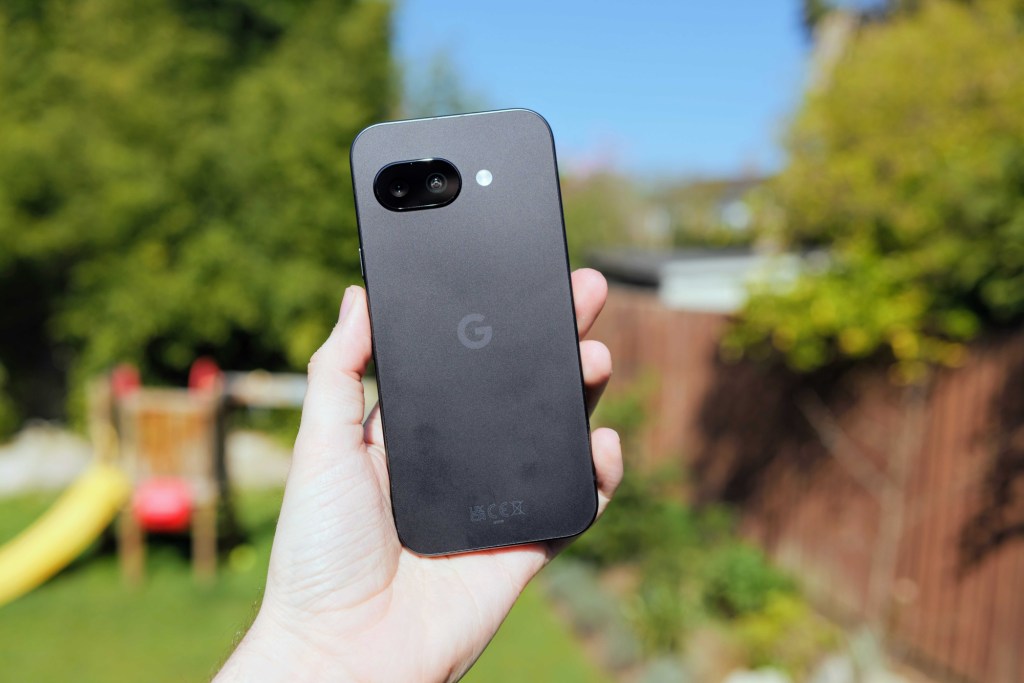
3. Google Pixel 9a
Stuff Verdict
Complete with a sleek redesign, upgraded main camera and Gemini built in – the Google Pixel 9a proves you don’t need to spend big bucks to get a premium phone experience.
Pros
- Sleek, premium new design and super bright screen
- Excellent camera and battery life
- AI smarts at a new affordable price
- Seven years of security updates
Cons
- Bezels could be smaller
- Charging speeds could be faster
| Google Pixel 9a specs | |
| Screen | 6.3in Actua Display, 1080 x 2424 OLED, 2700 nits, 60-120Hz |
| CPU | Google Tensor G4 |
| Memory | 8GB RAM |
| Cameras | 48MP f/1.7 main + 13MP,f/2.2 ultrawide rear 13MP, f/2.2 front |
| Storage | 128 GB/256 GB |
| Operating system | Android 15 |
| Battery | 5100 mAh |
| Dimensions | 154.7 x 73.3 x 8.9mm / 6.1 x 2.9 x 0.4in |
| Weight | 185.9 g / 6.6 oz |
We’ve long been fans of Google’s affordable phones, and the Pixel 9a continues that record – even if it truly stretches the definition of “affordable” now. This is still as well-rounded a phone and as streamlined an Android experience as you’ll get for the cash, with a composite shell that does a stellar impression of the glass used by its premium cousins. You’re also getting pure Android 15, which the 9a’s Tensor G4 CPU (same as the Pixel 9 Pro) runs without a stutter.
Where the Pixel 9a really excels is in the photography stakes. With powerful algorithms in its arsenal, almost every image it captures is balanced, noise-free and packed with detail. There’s no telephoto, but autofocus is rapid, while the combination of a high-pixel-count main camera and Night Sight smarts pulls true-to-life stills from tricky late-night scenes.
One-time luxuries like wireless charging and a 120Hz refresh rate are now standard, means you’ll struggle to find a better all-round Android experience for less.
- Read more: Google Pixel 9a review
Best premium Android phone
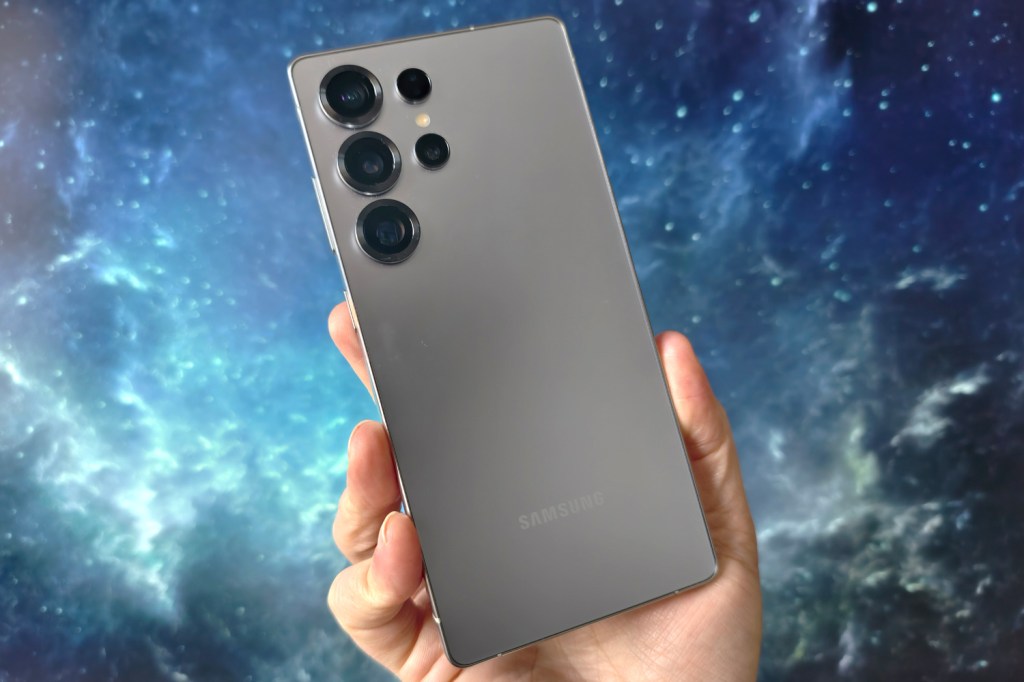
4. Samsung Galaxy S25 Ultra
Stuff Verdict
No massive year-on-year update, but still a fab flagship. Small visual tweaks and a few new internals keep the S25 Ultra compelling as a total package, despite not being a class leader for photography
Pros
- Simply outstanding performance
- Largely unchanged main camera still among the best in class
- Refined design and tougher build
- Galaxy AI finally starting to feel like a cohesive whole
Cons
- Beaten on battery by cheaper rivals using newer tech
- Few meaningful hardware changes from the last-gen phone
- S Pen a downgrade on last year
| Samsung Galaxy S25 Ultra specs | |
|---|---|
| Screen | 6.9in, 3088×1440 AMOLED, 120Hz |
| Processor | Snapdragon 8 Elite for Galaxy |
| RAM | 12GB |
| Storage | 256GB/512GB/1TB |
| Software | Android 15 with OneUI 7 |
| Cameras | 200+50+10+50MP (rear), 12MP (front) |
| Battery | 5000mAh |
| Dimensions | 163x78x8.2mm / 6.42 × 3.07 × 0.32 in |
| Weight | 218g / 7.69 oz |
Samsung’s Galaxy S25 Ultra proves that sometimes refinement is just as important as reinvention. This year’s flagship keeps much of what made the S24 Ultra a fan favourite while introducing meaningful improvements in design, performance, and AI integration. With Gorilla Armor 2 glass for superior durability and reduced reflections, a sleek titanium frame, and a larger 6.9in AMOLED screen that dazzles despite not being the brightest in the market, it’s a stunning device in every sense.
AI improvements are now front and centre, giving this phone a smoother, more consistent feel that genuinely competes with the very best. The new 50MP ultrawide camera adds welcome flexibility, while the 200MP main sensor still delivers superb results, packed with detail and punchy colours. Though the zoom lenses lag behind the competition, they still capture sharp, balanced images.
Wait, how can the very best Android phone only score four stars? Essentially, Galaxy S25 Ultra is an iterative update over last year’s S24 Ultra, which can now be had for considerably less cash.
While it may not represent a seismic leap from the S24 Ultra, it excels as a long-term upgrade for Samsung fans ready to take advantage of AI-driven software improvements. Not everything is perfect, of course. The S Pen’s downgrade and the battery’s limited stamina are worth noting, but for anyone after a high-end Android experience, the overall package remains hard to beat.
- Read more: Samsung Galaxy S25 Ultra review
Best premium iPhone

5. iPhone 17 Pro Max
Stuff Verdict
With the upgraded camera, the Pro Max is the ultimate powerhouse – again. The Pro lineup certainly presents a much better option for experienced users than the iPhone Air.
Pros
- Stellar performance
- Great new design – love the colours
- Taking photography up another level
Cons
- Aluminum less appealing than titanium
- Very expensive (of course)
- Standard iPhone 17 is a very good alternative
| Apple iPhone 17 Pro Max specs | |
|---|---|
| Screen | 6.9in 2868×1320 OLED HDR at 460ppi |
| Processor | Apple A19 Pro |
| RAM | 12GB |
| Storage | 256GB/512GB/1TB/2TB on-board |
| Software | iOS 26 |
| Cameras | 48MP ƒ/1.8 main, 48MP ƒ/2.2 ultrawide, 48MP ƒ/2.8 telephoto (8× optical zoom in) rear; 18MP ƒ/1.9 front |
| Battery | 4823 mAh (nanoSIM), 5088 mAh (eSIM) |
| Dimensions | 163x78x8.8mm / 6.43 x 3.07 x 0.35in |
| Weight | 233g / 8.22oz |
If you want the top-tier iPhone experience, the iPhone 17 Pro is the one to beat. It’s lightning-fast, takes outstanding photos, and its display is nothing short of gorgeous – though it doesn’t come cheap.
After spending time with the iPhone 17 Pro Max, there’s no doubt it’s every bit as powerful as Apple claims. Performance is jaw-dropping – in Geekbench 6, its single-core results were on par with the Mac Studio’s M3 Ultra chip. The new vapour chamber cooling keeps heat under control during gaming and high-zoom video recording, while the 4823mAh battery comfortably lasts close to two working days. A 40W charger refilled it to 50% in around 20 minutes.
The 6.9in OLED panel is a stunner, hitting a dazzling 3000nits outdoors – bright enough to stay clear even in direct sunlight. The refreshed “plateau” camera design stands out visually, and the updated 48MP triple-lens system produces sharp, detailed shots. Even at 8x optical zoom, images stay clean, and the 40x digital zoom easily outperforms the iPhone 16 Pro’s efforts.
The switch from titanium to aluminium won’t please everyone – ours picked up a tiny dent after a few days – but it still feels solid in the hand. iOS 26’s new Liquid Glass interface might split opinion, yet it looks stunning on such a large, vivid display.
If you want the most capable iPhone Apple makes, this is the one. But if you don’t need all the extras, the regular iPhone 17 gives you much of the same experience for less money.
- Read more: iPhone 17 Pro Max review
Best phone for photography
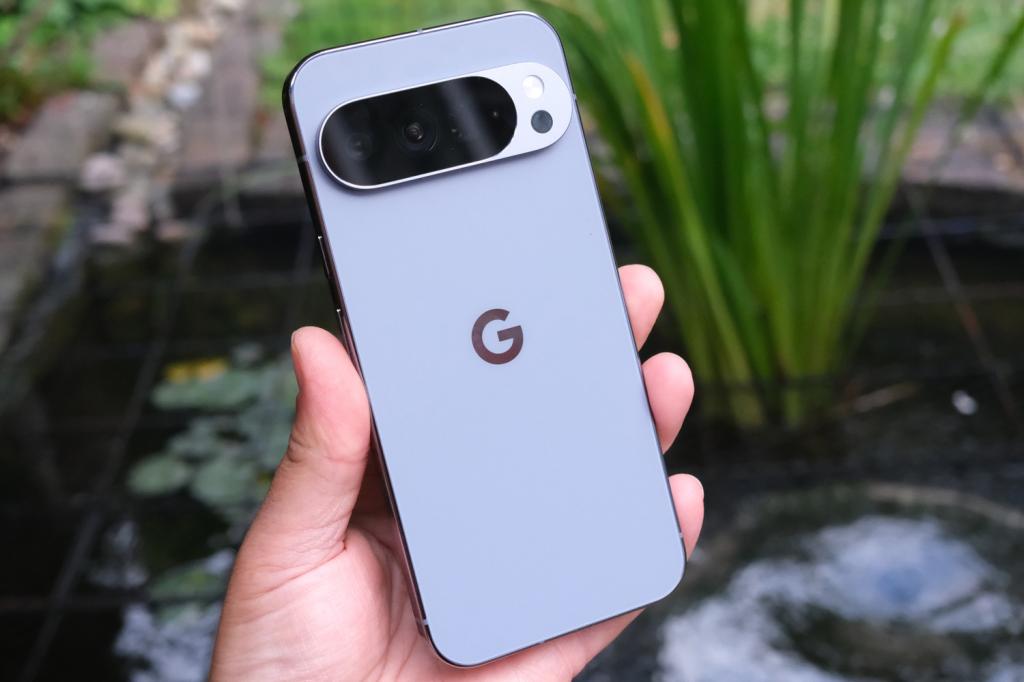
6. Google Pixel 10 Pro XL
Stuff Verdict
With the Pixel 9 Pro you can finally get the best camera and display tech in a compact 6.3in size. It blends top-tier AI features with a stunning design and exceptional battery life.
Pros
- Premium design and features in a smaller form
- Outstanding camera system with AI editing
- Seven years of software updates
- Excellent on battery
Cons
- Charging speeds still lag behind competitors
- Expensive compared to previous Pixel models
| Google Pixel 10 Pro XL specs | |
|---|---|
| Screen | 6.8in, 2992×1344 OLED w/ 1-120Hz |
| Processor | Google Tensor G5 |
| RAM | 16GB RAM |
| Storage | 128/256/512GB/1TB |
| Software | Android 16 |
| Cameras | 50MP + 48MP telephoto + 48MP ultrawide rear 42MP front |
| Battery | 5200mAh w/ 45W wired, Pixelsnap Qi2 25W wireless charging |
| Dimensions | 163x77x8.5 mm / 6.42 × 3.03 × 0.33 in |
| Weight | 232g / 8.18 oz |
The Pixel 10 Pro XL might look familiar, but it’s a refinement in all the right ways. Google’s flagship feels more mature this year, a polished mix of superb design, a class-leading screen, excellent cameras, and thoughtful upgrades that make it easier to live with day-to-day.
The new Moonstone finish looks stunning, Qi2 wireless charging finally brings Android into MagSafe territory, and the 6.8in OLED display is an absolute treat – sharp, fluid, and ridiculously bright, hitting up to 3300 nits.
Performance is strong, too. The Tensor G5 chip may not break benchmark records, but it’s fast, consistent, and cool-running. Paired with 16GB of RAM, multitasking feels effortless. The 5200mAh battery comfortably lasts a full day, and with 45W wired or 25W Qi2 wireless charging, topping up never feels like a chore. Sound quality has had a big step up, too, with upgraded speakers delivering a fuller, more balanced tone that suits both gaming and video.
As for the cameras, they’re every bit as good as you’d expect from Google. The trio – 50MP main, 48MP ultrawide, and 48MP telephoto – deliver beautifully detailed shots with natural tones and crisp contrast. Night Sight continues to lead the pack, while the AI-assisted 100x Pro Res zoom is fun to play with, even if it occasionally leans into generative territory.
But what really surprised us this year was the AI. Gemini’s smarter, more context-aware features are genuinely helpful, not gimmicky. Magic Cue brings up useful prompts mid-conversation – flight details when you call your airline, addresses when messaging friends – and it feels organic, not intrusive. Live Highlights and the new journalling app still need refinement, but they point in an interesting direction for Google’s software future.
The real breakthrough, though, is Camera Coach. This early preview feature analyses your framing in real time and suggests better angles or modes to improve your shot – complete with generative previews of what the change could look like. It’s simple, intuitive, and honestly, the first AI tool that’s made us want to use AI more, not less.
- Read more: Google Pixel 10 Pro XL review
Best phone for gaming
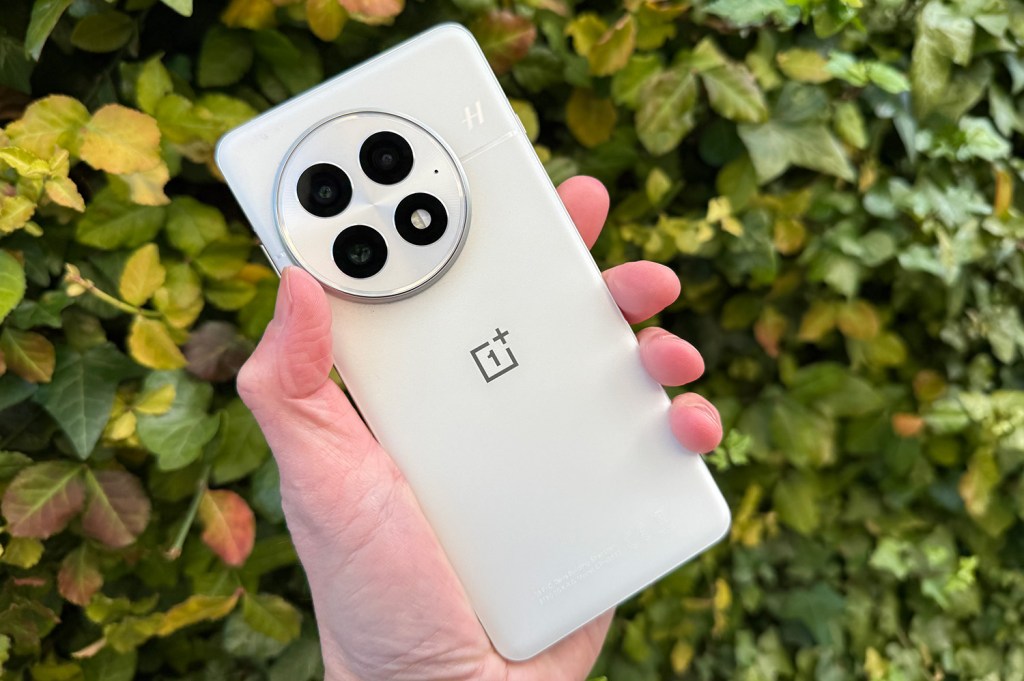
7. OnePlus 13
Stuff Verdict
OnePlus adds some decent updates to what was already a great flagship
Pros
- The screen is absolutely beautiful
- Excellent battery capacity and longevity
- Super-powerful thanks to the Snapdragon 8 Elite
Cons
- Doesn’t have Oppo’s dedicated camera button
- Few colour options
- Needs a 50W wireless charger
| OnePlus 13 specs | |
|---|---|
| Screen | 6.82in 3168×1440 120Hz OLED |
| Processor | Qualcomm Snapdragon 8 Elite |
| RAM | 16GB |
| Storage | 256/512GB |
| Software | Android 15 with OxygenOS |
| Cameras | 50+50+50MP rear, 32MP front |
| Battery | 6000mAh w/ 100W wired, 50W wireless charging |
| Dimensions | 163x77x8.5mm / 6.42 × 3.03 × 0.33 in |
| Weight | 213g / 7.51 oz |
Delivering killer specs at a competitive price point, we think the OnePlus 13 hits another home run. This year’s model doens’t move the game along so much in terms of design, but adds s simply massive battery, the fastest Snapdragon silicon going and a balanced trio of rear cameras. Given the price, it’s hard to argue with.
Its all-screen frontage still fits the modern mould, and the tactile matte back adds a premium feel. The display itself is outstanding, with dynamic refresh rates ranging from 1 to 120Hz, ensuring smooth performance across the board. The trademark alert slider instantly marks it as a OnePlus device, while the Hasselblad branding on the distinctive circular camera bump hints at enhanced photography features.
Performance-wise, the OnePlus 13 is predictably superb, handling everything we threw at it with ease. Battery life was impressively frugal during our tests, and when the 6000mAh cell did run out, the 100W SuperVooc charging had it back to full in just over half an hour. If you’re after a flagship bargain, we believe the OnePlus 13 comfortably undercuts every major big-screen rival.
- Read more: OnePlus 13 review
Best folding phones

8. Samsung Galaxy Z Fold 7
Stuff Verdict
Slimmer than ever, and with a superior camera setup; the Galaxy Z Fold 7 is a monumental year-on-year upgrade. Samsung has finally given foldable fans (almost) everything they’ve been asking for.
Pros
- Finally, a properly thin and desirable Z Fold
- Rear camera trio put in a fab performance for a foldable
- Larger screens make all the difference to usability
Cons
- Battery capacity is now the weak link
- A small minority will miss S Pen support
| Samsung Galaxy Z Fold 7 specs | |
| Screen | 6.5in, 2520×1080 120Hz AMOLED (outer) 8in, 2184×1968 120Hz AMOLED (inner) |
| CPU | Qualcomm Snapdragon 8 Elite for Galaxy |
| Memory | 12/16GB |
| Cameras | 200MP + 10MP telephoto + 12MP ultrawide rear 10MP front 10MP inner |
| Storage | 256GB/512GB/1TB |
| Operating system | Android 16 w/ OneUI |
| Battery | 4400mAh w/ 25 wired, 15w wireless charging |
| Dimensions | 158x143x4.2mm / 6.22 × 5.63 × 0.17 in (unfolded) 158x73x8.9mm / 6.22 × 2.87 × 0.35 in (folded) |
| Weight | 215g / 7.58 oz |
That the Galaxy Z Fold 7 arrived as unbelievably thin as it did was honestly a bit of a shock. We were used to Samsung phoning it in a bit with each successive generation, but this Fold feels entirely new, being just 4.2mm when unfolded and rocking a larger, more sensibly proportioned outer display. It feels like a traditional smartphone, until you unfurl it and see the giant 8in display lurking inside.
Performance is top-tier, courtesy of a Snapdragon 8 Elite for Galaxy chipset, and the software is much improved too. It arrives running Android 16, which brings some welcome boosts to multitasking, and all the AI-assisted apps continue to get smarter as well. A 200MP rear camera inherited from the Galaxy S25 Ultra is the icing on the cake.
Chinese brands were beginning to dominate the foldable space, leaving the rest of the world to look on with jealousy. That’s not the case anymore. Samsung is back at its best here.
- Read more: Samsung Galaxy Z Fold 7 review
Want more folding phone suggestions? Check out Stuff’s guide to the best folding smartphones.
Best phone for creatives
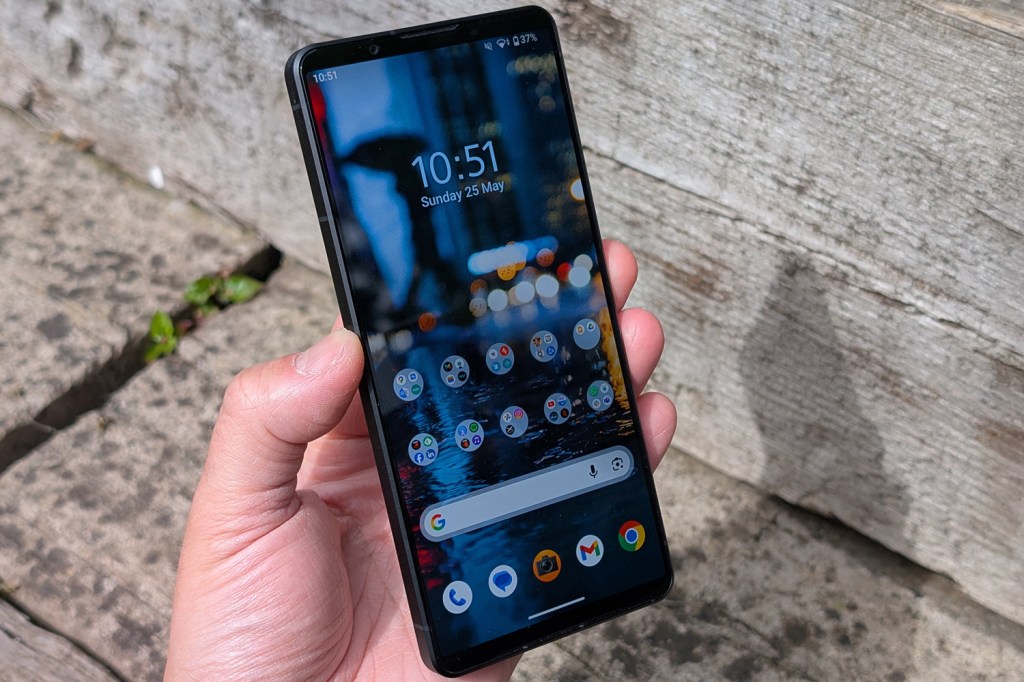
9. Sony Xperia 1 VII
Stuff Verdict
The Xperia 1 VII still flies the flag for features long forgotten elsewhere, which will please the Sony faithful. It takes mostly great photos too, but the old school approach isn’t for everyone.
Pros
- Modern performance without sacrificing fan favourite features
- Class-leading ultrawide and a brilliant lead lens
- Colourful, notch-free screen is fantastic for mobile movies and gaming
Cons
- Beaten for zoom stills clarity and point-and-shoot ability
- Battery life and charging speeds no longer class-leading
- Refusal to get with the times won’t win over new customers
| Sony Xperia 1 VII specs | |
|---|---|
| Screen | 6.5in 2340×1080 OLED w/ 120Hz |
| Processor | Qualcomm Snapdragon 8 Elite |
| RAM | 12GB |
| Storage | 256GB, microSD |
| Software | Android 15 |
| Cameras | 48+12+48MP (rear), 12MP (front) |
| Battery | 5000mAh |
| Dimensions | 162x74x8.2mm / 6.38 × 2.91 × 0.32 in |
| Weight | 197g / 6.95 oz |
The Xperia 1 VII picks up where Sony’s most ‘mainstream’ flagship for years left off. A 19.5:9 OLED screen with a Full HD+ pixel count is more in keeping with what rivals are doing, but there’s still room at the top and bottom for a pair of forward-facing stereo speakers.
All the other Sony hallmarks remain, including a 3.5mm headphone port and a microSD card slot (which you can get to without having to keep a SIM tray tool with you at all times). The overall styling is beginning to show its age, though, with some of the thickest screen bezels you’ll find for this kind of cash. Underneath, a Snapdragon 8 Elite does all the heavy lifting, and stays wonderfully cool in the process.
On the photography front, Sony has properly stepped up its ultrawide game this year, and the results speak for themselves. When it comes to fitting more of a scene into every snap, the Xperia VII is a class leader. It can still handle rapid burst shooting in HDR, with plenty of manual options for serious snappers, while the auto mode is there for people who prefer to just point-and-shoot.
It’s a pricey handset, no doubt, making it harder to recommend to all but those already converted to the Xperia way of life.
- Read more: Sony Xperia 1 VII review
How to choose the best smartphone for you
In order to buy the best smartphone for your specific needs, there are several important factors to consider. Luckily, Stuff’s smartphone experts are here to help you compare options and make a final decision.
Operating system: iOS vs Android
Your first big decision is whether you want Apple’s iOS or Google’s Android. Both are great, but they suit different people.
If you’re already deep into Apple’s world, using a MacBook, iPad, or AirPods (even Apple Music and Apple TV), sticking with an iPhone makes life easy thanks to tight ecosystem integration and iCloud sync.
On the other hand, Android phones offer more flexibility, customisation, and choice, with devices from Samsung, Google, OnePlus and others at a wide range of prices. They also work better with Google’s services, such as Google Drive and Docs.
The decision isn’t an easy one, and far more complex than what we can cover in this small section. For example, you should even consider what devices your friends and family use.
Ultimately, whether you choose iOS or Android, you’ll be getting a great operating system.
Display: resolution, refresh rate and brightness
The screen is what you stare at all day, so it matters. A good OLED display delivers rich contrast and true blacks, while LCD panels are usually found in cheaper models and can look slightly flatter.
Higher refresh rates (90Hz, 120Hz or even 144Hz) make scrolling and gaming feel buttery smooth. Also check the peak brightness rating – anything above 1000 nits helps with outdoor visibility.
If you stream films or play games, prioritise an OLED with HDR support for that extra punch.
Camera: quality beyond megapixels
Every phone claims to have a great camera, but the details matter. Don’t just look for a camera with the highest megapixel count, there are other more important things to consider. For example, a larger sensor size captures more light, which means sharper photos and better low-light performance.
Look for phones with optical zoom lenses if you shoot from a distance, and wide-angle cameras if you prefer shooting landscapes.
Now, a great camera phone is more than just the hardware. You’ll want to look for computational photography features like Night Mode or AI image processing to improve everyday snaps.
If photography is your thing, check our guide to the best camera phones, where we go into more depth about colour accuracy, portrait quality, and even video stabilisation.
Battery and charging: real-world testing
Battery life can make or break your daily experience. A big battery (measured in mAh) doesn’t always mean better performance – it’s about efficiency too. You’ll wan to read our full reviews that test real-world battery life, not just lab numbers.
Fast charging (wired or wireless) is another bonus – some phones can now top up 50-percent in under 30 minutes. It can really save the day when you’ve forgotten to put you phone on charge over night.
Reverse charging are also handy if you’ve got earbuds or a smartwatch (although not vital in our opinion).
Performance and hardware: power under the hood
A phone’s chipset and RAM affect everything from multitasking to gaming. Top-end processors like Apple’s A19 or Qualcomm’s Snapdragon 8 Gen 5 deliver flagship performance, while mid-range chips strike a balance between power and efficiency. Most modern phones, even cheaper models, will now handle general browsing and social media, but will struggle when it comes to gaming and more graphics-intensive tasks.
Storage is worth considering too – 128GB is a safe minimum these days if you take lots of photos or download apps, but we’d recommend 256GB. Some Android phones offer expandable storage, which can save money later on.
Software support and updates
We’re keeping our phones for longer than ever, so a long support period matters. Apple leads the way with around five to seven years of iOS updates, while most Android brands now offer at least three to five years of OS and security patches. This means better performance, fewer bugs, and more security over time.
If you plan to keep your phone for several years, pick a brand known for consistent software updates, like Google, Samsung, or Apple.
Design and ergonomics: feel and durability
The best phone isn’t just about specs, it should also feel premium in your hand as well. Consider size, weight, and materials. Glass looks premium but can be slippery, while aluminium or matte finishes tend to grip better.
An IP rating tells you how water- and dust-resistant the phone is. An IP68 rating, for example, means it can survive a splash or two without stress.
If you prefer a more compact phone then you can read Stuff’s guide to the best small phones, or you might prefer a bigger screen which is better for watching videos and reading.
Special features worth knowing about
Modern smartphones pack clever extras. The foldables bring tablet-sized screens in your pocket, while flip phones offer extreme compactness.
Some models support stylus input for note-taking and sketching, while AI tools are now baked in for smart photo editing, real-time translation, and call screening.
At the high end, features like satellite connectivity are now becoming popular, while the best smartphones for gaming have advanced cooling and custom gaming modes for ultimate performance.
Price and value: finding your sweet spot
Finally, there’s price. Entry-level phones now offer impressive performance for under US$400 / £300, while mid-range models around US$600 / £500 hit a sweet spot of features and design. Flagships cost £1000 and beyond – but they usually deliver the best displays, cameras, and long-term support.
The trick is to balance what matters most to you. If you only browse and stream, you can save hundreds. If you want top-tier photography and longevity, it’s worth stretching your budget.
Once you’ve decided on a budget, you’ll be able to narrow down potential candidates from our best cheap phone guide, best mid-range smartphone guide, and the best premium phones (this guide).
Frequently asked questions
Is a foldable phone worth buying in 2025?
Yes, but it really comes down to what matters most to you. Foldable phones in 2025 have come a long way – hinges are sturdier, and most screens now look almost crease-free.
They’re brilliant if you like having a tablet-sized display that folds into your pocket. Great for multitasking, watching videos, or jotting down quick sketches on the go.
That said, they still cost more than regular flagships, and you’ll usually trade a bit of battery life for that second screen.
If you enjoy experimenting with new tech and need extra screen space, go foldable. If you’d rather stick with something simpler and tougher, a standard phone will serve you better.
How long should a flagship phone last?
A flagship phone should comfortably last between four and six years. Premium models use high-end materials, powerful chipsets, and now get extended software support as well (up to seven years for iPhones and many new Android phones).
Naturally, battery health will decline first, but you can often replace it cheaply.
The main reason to upgrade sooner is for new AI features, not because your old phone stopped working.
How much RAM and storage do I need in a smartphone?
For most people in 2025, 8GB of RAM and 128GB of storage still hits the ideal balance. It’s enough to keep everything running smoothly, whether you’re juggling apps, gaming, or keeping photos saved locally.
If you’re the kind who edits video, plays demanding games, or loads your phone with hefty apps, you’ll be happier with 12GB of RAM and at least 256GB of storage.
Those who rely on cloud backups like Google Photos or iCloud can get away with less and spend the savings elsewhere.
Smartphone battery life explained: mAh and charging speed
Battery capacity is measured in milliamp-hours (mAh). It tells you roughly how much energy your phone can store.
A 5000mAh battery usually lasts a day and a half, but real-world endurance depends on screen brightness, refresh rate, and processor efficiency.
Charging speed, measured in watts (W), shows how quickly the battery can refill. Fast chargers rated 45W or higher can often deliver 50% in under 30 minutes.
What is the difference between a mobile phone and a smartphone?
A “mobile phone” is technically any portable device that can make calls and send texts – think old-school feature phones with very limited extras.
A “smartphone” goes much further, combining calling with advanced computing power. Modern smartphones run platforms like iOS or Android, offer app stores, internet access, GPS, cameras, and much more.
So while every smartphone is a mobile phone, the reverse isn’t true.
How we test smartphones
We’ve tested every phone on this list ourselves, so you can trust our picks. We treat each handset like a daily driver – not a staged demo – and that makes a big difference to the recommendations we give.
Typically, we spend a week or more with each phone, using it for calls, streaming, navigation, photos, messaging and gaming. That hands-on time lets us spot real-world strengths and quirks that a quick bench test would miss. We stress-test performance by multitasking and running demanding games like Genshin Impact or Call of Duty: Mobile, check battery life across different usage patterns, and time how long each device actually takes to charge from 0 to 100%.
Displays get judged for brightness, colour accuracy and outdoor readability, but also for how they handle different media. We watch HDR shows on Netflix, scroll through Instagram’s bright feeds, stream YouTube videos in varying resolutions and browse photos to see how punchy – or natural – colours look. We also note how smooth adaptive refresh rates feel when scrolling or gaming, and whether viewing angles hold up under harsh light.
Camera testing includes daylight, low-light and video scenarios – everything from shooting portraits in busy city streets to night scenes and 4K stabilised clips – to see how lenses, autofocus and image processing behave. We also pay attention to build quality (does it scratch easily?), speaker performance when playing music or YouTube, and any software oddities, like app crashes or slow animations. We look at how clean the interface feels, whether there’s bloatware, and how strong the manufacturer’s update promise really is.
Our reviews cover the essentials separately – battery, screen, camera, performance and everyday usability – so you get a clear picture of what owning the phone will be like, not just what its spec sheet says. The goal is simple: help you buy a phone that actually fits your life.
For more information on Stuff’s rating and review process, read our page on how we test products.
Recent updates
- 31st October 2025: We’ve added the iPhone 17 Pro Max as the best premium iPhone.
- 27th October 2025: We’ve replaced the iPhone 16 with the newer iPhone 17 as the best phone overall. We also replaced the Google Pixel 9 Pro with the Google Pixel 10, and added the Google Pixel 10 Pro as well.




